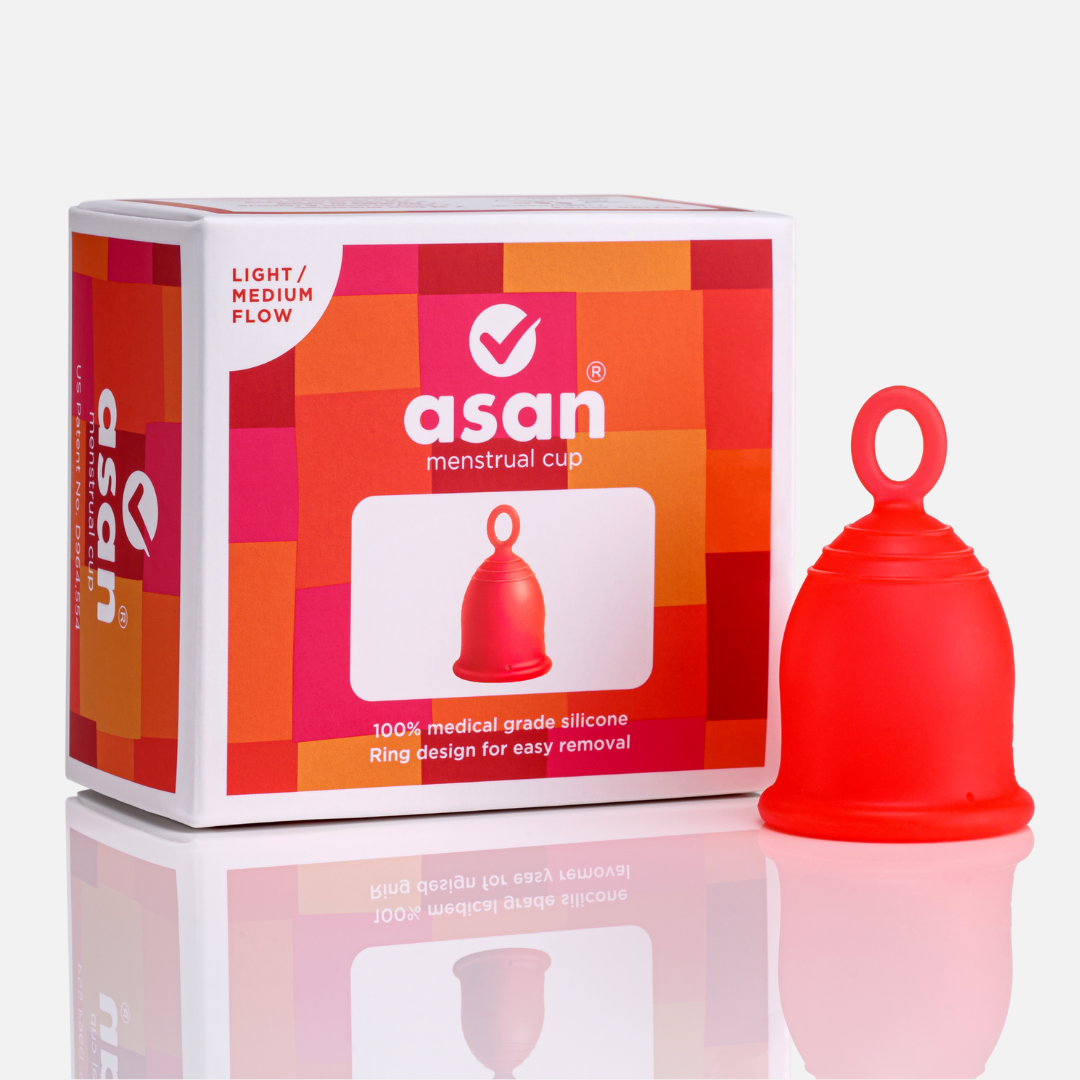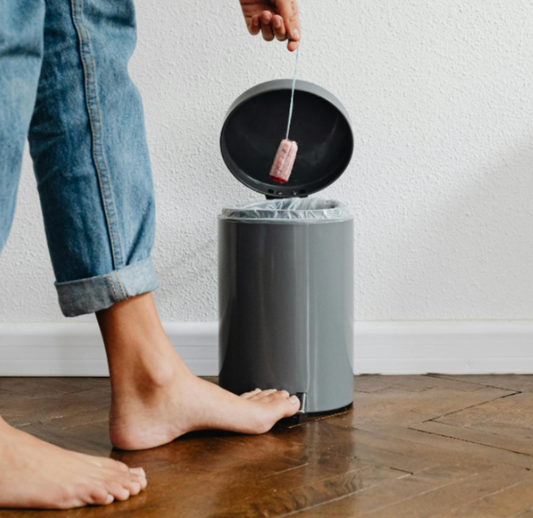 Recently there has been a lot of buzz about whether sanitary pads have harmful chemicals.
Recently there has been a lot of buzz about whether sanitary pads have harmful chemicals.
For example, Toxic Links released a study stating that there are high amounts of chemicals found in sanitary napkins and the chemicals used to manufacture sanitary pads in India can cause heart disorders and cancer.
Similar studies have been conducted in the US, Europe and China to understand the chemical components in sanitary pads and answer the question, do sanitary pads have harmful chemicals?
That said, many of these studies have not been peer-reviewed, which means that the results have not yet been accepted by the academic community. This also means there may be inaccuracies in the studies, or there simply isn’t enough research for us to draw strong conclusions about whether sanitary pads have harmful effects.
In this blog, we will dive into what chemicals are in sanitary pads and whether or not using sanitary pads are harmful for our bodies.
what are sanitary pads made from? do pads have chemicals?
Unfortunately, there is no regulation that makes it compulsory for manufacturers to print ingredients of sanitary pads on packaging. This means that we actually don’t know every ingredient that goes into a pad!
What we do know is that most sanitary pads are made from cottons, plastics, adhesives and fragrances. And all the studies conducted have found harmful chemicals in sanitary pads.
When it comes to the harmful effects of sanitary pads, that comes from two elements - phthalates and volatile organic compounds (VOCs).
 what are phthalates and how is this chemical used in sanitary pads?
what are phthalates and how is this chemical used in sanitary pads?
Phthalates are a chemical used in plastics to make them more flexible, absorbent and durable.
They are found in all sorts of objects around us - from vinyl flooring to perfumes.
In sanitary pads, phthalates have been found in the plastic material used on the top and bottom layers of a pad, as well as in the hot melt adhesive used while manufacturing.
what are voc's and how are they used in sanitary pads?
VOCs can be understood as gases that are emitted from products into the air.
These are typically used in paints, deodorants, air fresheners, nail polish, moth repellents, fuels and automotive products.
In sanitary pads VOCs are often used to add fragrance.
how can phthalates and voc's affect our bodies?
Phthalates and VOCs can be harmful when in contact with our bodies.
Phthalates act as endocrine disruptors in our bodies - which means that they can block our body from producing hormones we need to stay healthy. This can affect our reproductive systems, cause diabetes and also lead to birth defects or cancer.
On the other hand, VOCs are a volatile liquid which can evaporate in the air. So they can be absorbed by our body and impact brain functioning, cause liver and kidney dysfunctions and lead to skin inflammation.
 how does our body absorb phthalates and voc's?
how does our body absorb phthalates and voc's?
While phthalates and VOCs can be damaging for our health, the most important factor to keep in mind is the dosage that we are exposing ourselves to.
Using sanitary pads is not the only way these chemicals can make their way into our bodies. In fact, we also consume them through processed food, body care products, and simply breathing in polluted air.
Phthalates usually exit our bodies through sweating within 24 hours, and VOCs take about 2-3 months for our bodies to get rid of them.
So, most of us will already have a certain amount of phthalates and VOCs present in our bodies - which is not considered to be dangerous.
But one thing to keep in mind is that our vagina is the most absorbent part of our body - making it up to 15 times more likely than oral consumption for anything to enter our bloodstream.
Anything that comes in contact with our vaginal opening can be absorbed directly into our bloodstream, which then gets distributed throughout our body. This means that using sanitary pads is direct exposure to phthalates and VOCs.
While this has been proven biologically, the transfer rates of phthalates from sanitary pads into our bodies are still unknown.
how much dosage of phthalates and voc's are present in sanitary pads?
There have been various studies to understand exactly how much phthalates and VOCs are present in sanitary pads and they conclude that it is within a safe amount for our bodies.
While the exact amount varies from brand to brand, most popular sanitary pads sold have harmful chemicals.
And what we also know is that 15% of our body’s absorption of phthalates and VOCs happen through sanitary pads if we are using them every month.
are sanitary pads carcinogenic?
Are you wondering if using sanitary pads causes cancer? Well, unfortunately there is insufficient research to conclude whether or not sanitary pads can definitely cause cancer.
However, any exposure to harmful chemicals can cause different forms of cancer in our bodies.
are tampons less harmful than sanitary pads?
Similar to sanitary pads, tampons also contain phthalates and VOCs.  In fact, using a tampon can be more harmful than a sanitary pad as it sits in our vaginal canal - so our body has direct internal exposure to absorb the phthalates and VOCs.
In fact, using a tampon can be more harmful than a sanitary pad as it sits in our vaginal canal - so our body has direct internal exposure to absorb the phthalates and VOCs.
so what other period product options are available?
While using sanitary pads is safe to use, it still contains harmful chemicals which are not great for our bodies.
So, the best option is to switch to chemical-free period products that are guaranteed to be safe for you - such as period underwear, reusable cloth pads or a menstrual cup.
High quality period underwear and reusable cloth pads are made from fabrics which are safe for your body. They both absorb your period flow and can be worn for up to 6 to 8 hours - depending on your flow.
On the other hand, a menstrual cup is an insertable period product that collects your period flow. It sits inside your vaginal canal and can be worn for up to 12 hours.
 The Asan cup is a patented menstrual cup with a unique removal ring. It is made with Class 6 Medical Grade silicone - which is the highest quality silicone available to make menstrual cups with.
The Asan cup is a patented menstrual cup with a unique removal ring. It is made with Class 6 Medical Grade silicone - which is the highest quality silicone available to make menstrual cups with.
In fact, it’s the same material used in breast implants and heart stents. So you can rest assured that it doesn’t contain any harmful chemicals and is super safe for you.
frequently asked questions
Do sanitary pads harm the environment?
Yes, single-use period products such as sanitary pads and tampons definitely harm the environment.
How are sanitary pads harmful for the environment?
There are many harmful effects of sanitary pads on the environment.
Sanitary pads are not biodegradable, which means that they can take between 500 - 800 years to break down. And during your lifetime, you will use around 10,000 sanitary pads.
This is one of the biggest disadvantages of sanitary pads as they continue to pile up in landfill or get dumped in our oceans - blocking sewerage drains, causing a threat to birds and sea animals, and adding to global plastic pollution.
Read our sustainability page to learn more.
What is the carbon footprint of a sanitary pad?
The manufacturing process of sanitary pads requires large amounts of energy and water, contributing directly to the carbon footprint of a sanitary pad.
One year’s worth of sanitary pads have a carbon footprint of approximately 8.9kg CO2 emissions - equivalent to charging a mobile phone over 1000 times!
So the carbon footprint of sanitary pads has definitely contributes towards global warming and climate change.
How are sanitary pads harmful for other people?
Not only are the chemicals used in sanitary napkins harmful for you while you wear them, but they are also extremely harmful for garbage collectors who are employed to process household waste.
In countries such as India, most waste segregation is done manually by waste pickers - who are required to process your waste from your house to landfill sites.
Many of these workers often separate their waste with bare hands, being exposed to harmful chemicals in sanitary pads such as phthalates, VOCs and bacteria from period secretion on pads.
Ready to make the switch from sanitary pads to the Asan cup? Shop here now.




